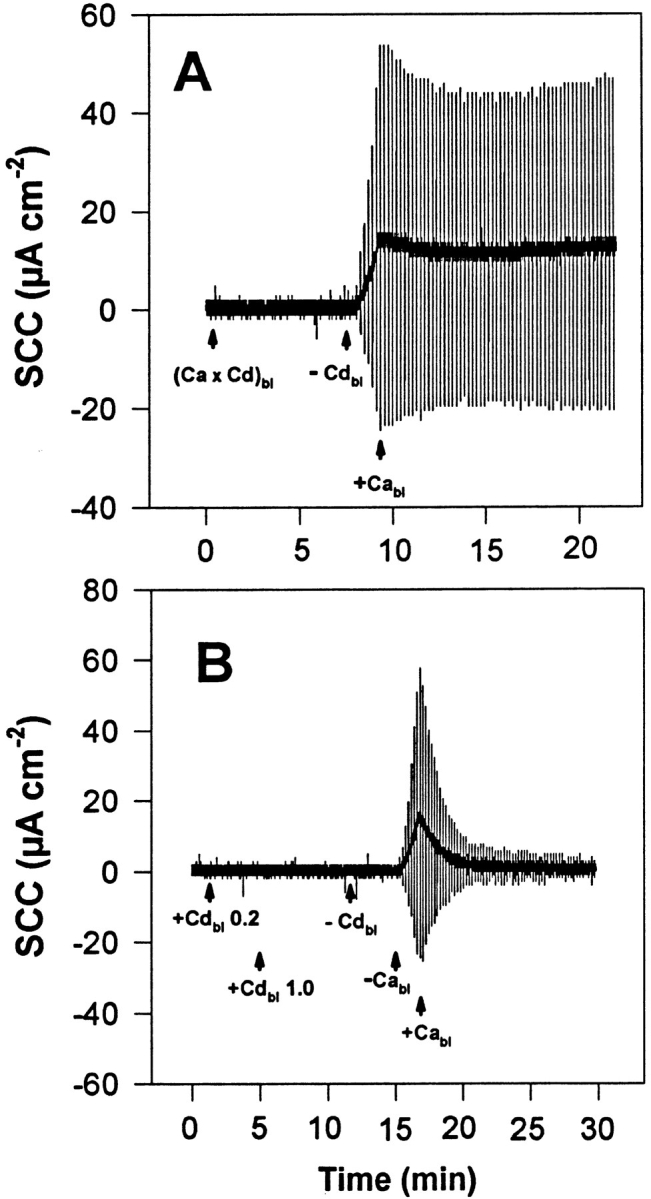Figure 3.

Representative experiments (of a group of seven tissues) of the action of Cd2+ added to the basolateral solution on the dynamics of TJ opening and closing. The urinary bladders were short-circuited and bathed on the apical side by 75 mM KCl and on the basolateral side by NaCl Ringer's solution. (A) Basolateral Ca2+ was replaced by 1 mM Cd2+ ((Ca × Cd)bl) with no resulting increase of TER. Afterwards, Cd2+ was removed from the basolateral solution (−Cdbl) leading, after a few seconds, to an increase of TER that can be terminated by reintroduction of Ca2+ (1 mM) into the basolateral fluid (+Cabl). No recovery of TER was observed in response to reintroduction of Ca2+, in contrast to control tissues. (B) Cd2+ was added to the basolateral solution (in the presence of 1 mM Ca2+) at concentrations of 0.2 mM (+Cdbl 0.2) and 1.0 mM (+Cdbl 1.0). Subsequently, Cd2+ was removed (−Cdbl) without any noticeable effect. Afterwards, basolateral Ca2+ was also removed (−Cabl), leading to a conspicuous decrease of TER that fully reverts upon readmission of Ca2+ into the basolateral fluid (+Cabl). The vertical deflections of SCC, caused by pulses of ±1 mV in the clamping potential, are proportional to the overall tissue electrical conductance (G), where G = 1/TER.
